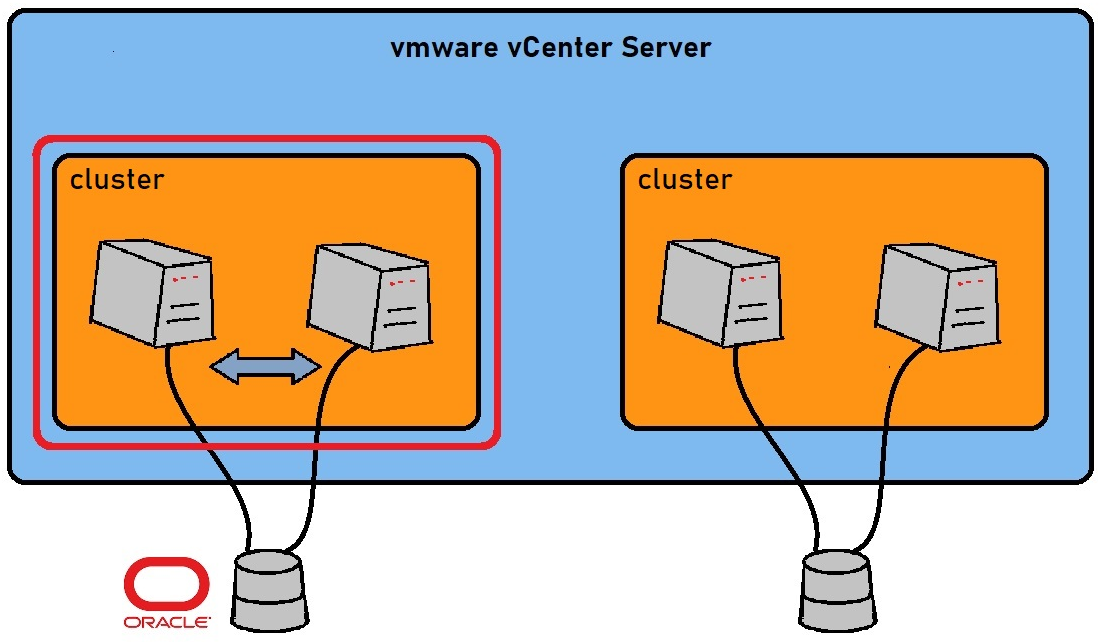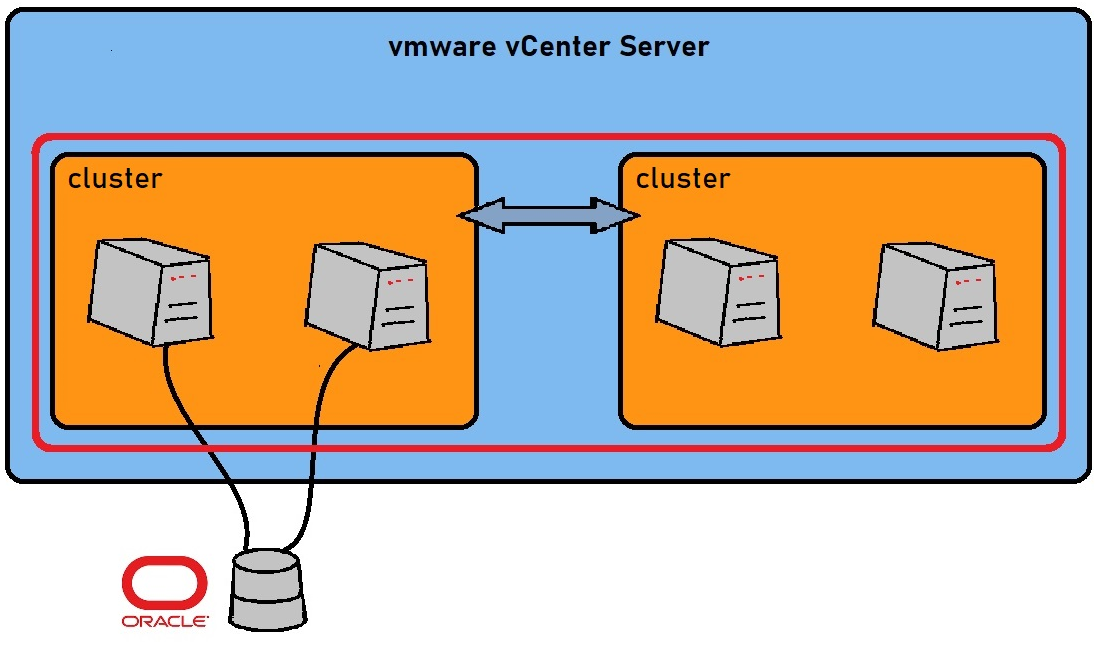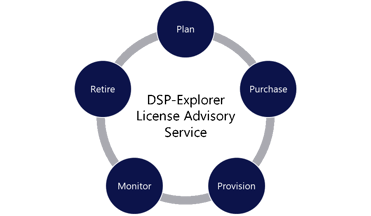- About
Getting to know us
- Services
- Managed Services
- Application Services
- Cloud Services
- Data Science
- Consulting Services
- Technology Solutions
Managed Services
Application Services
Data Science
Consulting Services
Technology Solutions
- Industries
- Resources
Resources
- Contact
- Contact us
What does your version of VMware mean for Oracle Licensing?
Contents
The Virtual Machine and Oracle
The use of hypervisor technology helps businesses manage hardware investments much more flexibly and efficiently.
The use of Virtual Machines (VMs) can reduce IT costs by squeezing much more value from their servers, and by deploying multiple applications on multiple guest operating systems.
As VMs can be used to provide resilience in the event of a server failure, by simply moving the VM to a functioning server, as well as more fluidity for test and development purposes, Oracle insists that any servers to which a VM can be moved, are fully covered by licensing.
This subject was covered recently in DSP’s Oracle Licensing Webinar - catch up with our on-demand version: Oracle Licensing On-Demand Webinar.
The purpose of this article is to focus on the market-leading VM technology, VMware and how the different versions of VMware affect the exposure you are likely to encounter to Oracle licensing.
To discuss your current or planned VM infrastructure with DSP, please book a meeting.
VMware Versions and Oracle Licensing
As with any enterprise software, the capabilities of VMware have grown as it has evolved over the years and with these enhancements, the liability associated with Oracle licensing has also been affected.
Consequently, simply upgrading your VMware environment may inadvertently cause an organisation to significantly breach its Oracle licensing overnight. It is, therefore, crucial to understand exactly what the different versions mean for licensing.
It is also important to be mindful that, as Oracle’s Database Standard Editions (DBSE/1/2) have socket limits, if you are running one of these editions, no server in the licensable VMware environment should breach this rule. For example, Oracle Database Standard Edition 2 has a socket-limit meaning that any server in the VMware vCenters, that are in scope for licensing, should be no bigger than a two-way server (even if not all sockets are populated).
In accordance with Oracle licensing, in all of the scenarios below, dedicated storage is required, exclusively for the VMware guest virtual machines, that Oracle is running on, or further problems could be encountered.
These examples are intended to set out the basic ‘starting point’ for each VMware version, however, there are ways to moderate these positions, which are summarised in Architecture Solutions to Mitigate Oracle Licensing Exposure on VMware, below.
To discuss your current or planned VM infrastructure with DSP, please book a meeting.
Up-to and including VMware 5.0
Before VMware 5.1 it was not possible to move a VM from one server cluster to another, so the cluster boundary can be seen as a ‘hard border’. However, any server within a cluster used for any Oracle workload must be licensed.
The diagram below illustrates where the obligation to license Oracle lies, framed in red, in this scenario (ie: the second, non-Oracle cluster does not require Oracle licensing):

VMware 5.1 to 5.5
When VMware 5.1 was released, it became possible to migrate VMs from one cluster to another within the VMware vCenter and therefore any host server within any cluster contained in the VMware vCenter, needed to be licensed for Oracle software, even if not all servers/clusters are directly connected to the shared storage where Oracle resides and even if there are multiple datacentres in the VMware vCenter, as per the red frame below:

VMware 6.0+
From VMware 6.0 and above, the ability to live migrate VMs to any host in any of the organisation’s VMware vCenter, was introduced.
Therefore, as per the red frame in the example below, all hosts, in all clusters, in all VMware vCenters, need to be licensed for Oracle:

Architecture Solutions to Mitigate Oracle Licensing Exposure on VMware
To lessen your Oracle licensing obligations in the above scenarios, the adoption of physical network constraints can establish that your Oracle installation is confined to specific servers in the virtualised environment.
This confinement needs to be controlled outside of the hypervisor technology itself and there are a number of methods to this effect, to regulate storage access solely to the servers intended for Oracle workloads and to limit network connectivity, to prohibit VM migration.
DSP have many years’ of experience in advising on how to design their virtualised environments and have directly saved our customers millions of pounds in the process.
To obtain our guidance on VMware isolation, please contact us for a copy of our dedicated VMware isolation guide.
DSP & Oracle Licensing Services
DSP has been certified by Oracle to deliver official licensing advice, for over ten years and is currently one of only four Oracle partners with this status.
DSP put this licensing expertise to use for Oracle Software Asset Management reviews, often in preparation for the next scheduled official, Oracle licensing review and we have a long history of providing licensing services and ensuring compliance.
Architectures, virtualisation, cloud and constant changes to Oracle’s licensing policies mean that DSP’s Oracle License Advisory Services are essential for any organisation using Oracle technology and have proven to save our customers millions of pounds. To do this, we follow our time-proven methodology to analyse what our customers need, what they own and what they are using, in terms of their Oracle estate.
DSP’s Oracle Licensing Services include:
• Oracle Premier Support cost reduction negotiations
• Oracle GLAS Audit Support
• Continual Oracle Software Asset Management
• Oracle Licensing Training
• Oracle Cloud sizing and ‘BYOL’ modelling
• Complex contract negotiation such as novations for mergers & acquisitions
• Oracle Unlimited License Agreement (ULA) sizing, contracting & declaration

To read more about our Oracle SAM Methdology as above, please visit our dedicated Oracle Software Asset Management (SAM) page.
Case Study
Electricity Distribution Co: DSP were asked by a long-standing customer to consult on their extensive Oracle deployments, to ensure that a planned re-architecture of these deployments were consistent with Oracle licensing rules and regulations.
The review of licensing was done in two stages. The first stage was a DSP consultation with the customer on their planned architecture, with recommendations, where necessary, on the design of compute and storage in relation to hypervisor technology, including VLANs and LUN mapping to attain acceptable levels of isolation, in accordance with Oracle’s terms and conditions relating to soft-partitioning.
When the recommended design was agreed upon and documented, the second stage was a DSP engagement with Oracle License Management Services Global (now ‘GLAS’) on behalf of the customer to obtain an official approval of the proposed architecture and confirmation of its conformity with guidance given by Oracle’s Chief Architects Office.
Once the exercise was completed successfully, the company’s Technical Architecture Manager commended DSP’s efforts and expressed his appreciation for the great deal of time that the exercise had avoided for his team and the costs saved, which was estimated at millions of pounds.
VMware Isolation Guidance
If you'd like to find out more about our VMware Isolation, we can request a copy of our VMware Isolation Guidance PDF via the button below.

To discuss your current or planned VM infrastructure with DSP please book a meeting today. Alternatively, review our full range of Oracle Licensing support and services.

.png?width=250&name=stonewater-logo%20(1).png)

